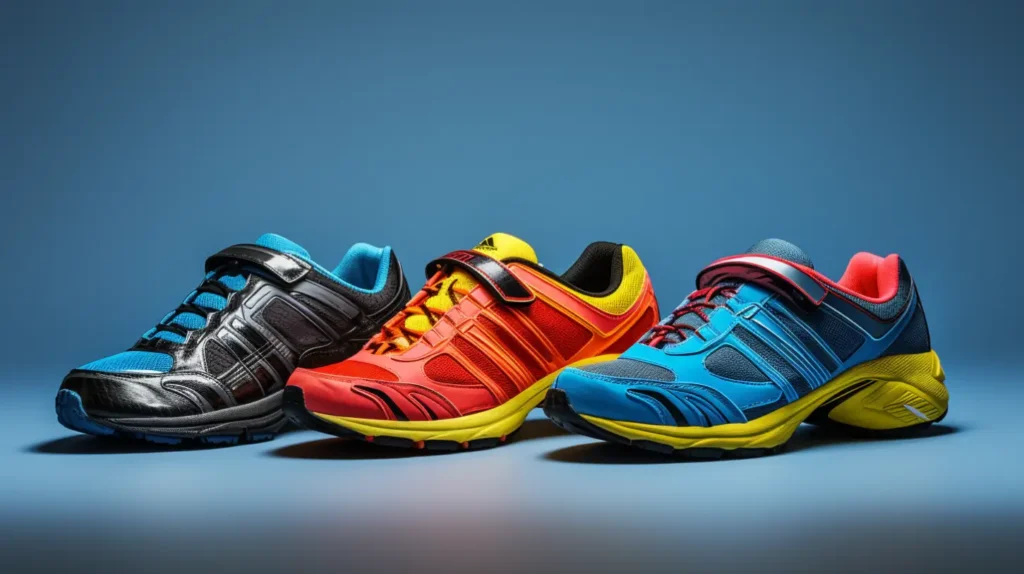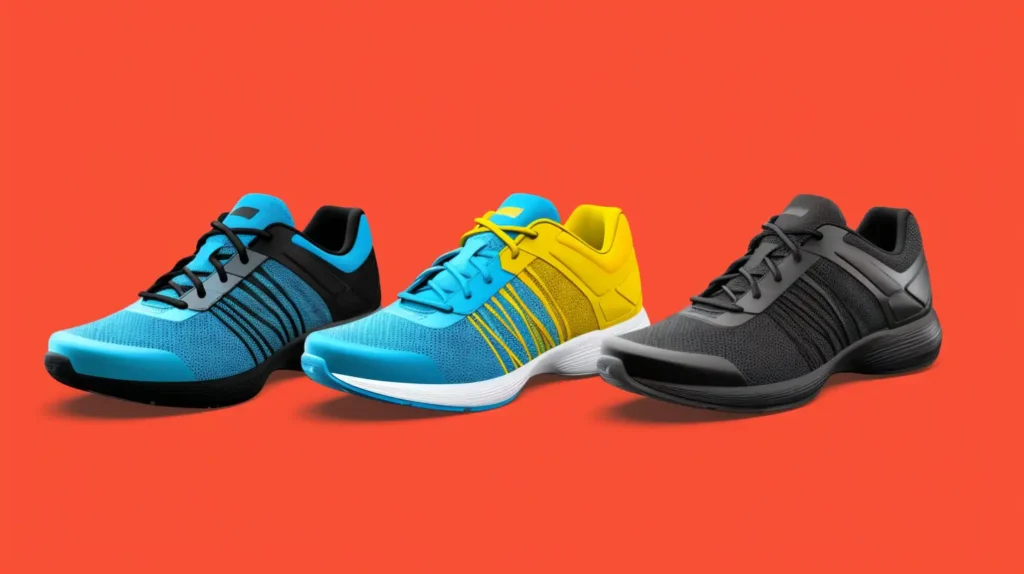So, what exactly are cross training shoes? These shoes are specifically designed to cater to the various movements and exercises involved in cross training workouts. They offer a combination of features from running shoes, tennis shoes, and volleyball shoes, making them perfect for individuals engaged in a range of physical activities and sports.
- Top Brands for Cross Training Shoes: Nike, Nobull, Reebok, and On
- Key Features and Construction of Cross Training Shoes
- Finding the Perfect Fit: Tips for Choosing Cross Training Shoes
- Conclusion
- Source Links
- People also ask
- Q: What are cross training shoes?
- Q: What makes cross training shoes different from running shoes?
- Q: What are the key features to look for in good cross training shoes?
- Q: Can I wear running shoes for cross training?
- Q: What are the best cross training shoes for women?
- Q: What are the best cross training shoes for men?
- Q: How do I choose the best cross training shoes for my needs?
- Q: What are the benefits of wearing cross training shoes?
- Q: Are New Balance cross training shoes suitable for high-intensity workouts?
- Q: What is the difference between cross training shoes and weightlifting shoes?
Let’s take a closer look at some of the key benefits and features of cross training shoes. These shoes are known for their flexibility in the midsole, which allows for easy movement and agility during different exercises. The good grip ensures stability and prevents slips, while the durability ensures that your shoes can withstand the demands of your workouts. The breathable upper keeps your feet cool and comfortable, while the lightweight design prevents fatigue during long training sessions. Lastly, the cushioning throughout the shoe provides the necessary support and shock absorption for your feet.
When it comes to choosing cross training shoes, it’s important to consider your specific needs and the type of training you do. Popular brands like Nike, Nobull, Reebok, and On offer a wide range of options to choose from. These brands are known for their quality and innovation in the cross training shoe industry.
Top Brands for Cross Training Shoes: Nike, Nobull, Reebok, and On
When it comes to finding the perfect cross training shoes, certain brands stand out for their quality, performance, and innovation. Worldwide athletes and fitness enthusiasts trust Nike, Nobull, Reebok, and On, which are among the top brands in the market.

Nike: Nike offers a wide range of cross training shoe models that cater to different needs and preferences. The Nike Metcon series, including the Nike Metcon Free 5, Nike Metcon, Nike Superrep Go, Nike Superrep 4, and Nike Bella 6, is particularly popular for its stability, flexibility, and comfort. These shoes are designed to provide excellent support during weightlifting and dynamic movements, making them ideal for cross training workouts.
Nobull: Nobull Training shoes are known for their durability and performance in tough and high-intensity workouts. These shoes feature a SuperFabric® upper that is resistant to abrasions and offers superior durability. With a microsuede tongue and a low stack height for increased stability, Nobull shoes are designed to withstand the rigors of demanding cross training exercises.
Reebok: Reebok has been a trusted brand in the fitness industry for decades, and their cross training shoes live up to the reputation. The Reebok Nano series, especially the Reebok Nano 3, is highly regarded for its versatility and seamless transition from lifting to cardiovascular exercises. These shoes provide stability and support without compromising on flexibility and comfort.
On: On is a relatively newer brand that has gained popularity in the cross training shoe market. Their Cloud X 3 is a lightweight and flexible option suitable for a variety of workouts, including HIIT, running, and fast-paced movements. With responsive cushioning and a breathable upper, On shoes offer the perfect balance of comfort and performance.
In conclusion, when it comes to cross training shoes, Nike, Nobull, Reebok, and On are four brands that consistently deliver high-quality shoes designed to meet the demands of intense workouts. Each brand offers unique features and technologies that cater to different training styles and preferences, ensuring that athletes can find the perfect fit for their needs. These top brands have a cross training shoe that will support you through any fitness journey.
Key Features and Construction of Cross Training Shoes
Cross training shoes are carefully designed with specific features and construction to meet the demands of various movements and activities. Understanding these key features is essential to finding the right cross training shoe that will support your fitness goals. Let’s explore the important elements of cross training shoe construction:
Heel Support
One crucial aspect of cross training shoes is their heel support. During weight-bearing exercises, a stable heel is essential to prevent injuries and ensure proper form. Cross training shoes achieve heel support through a combination of materials such as TPU (thermoplastic polyurethane), high abrasion rubber, and EVA foam. These materials provide a firm and secure heel grip, promoting stability and preventing slippage.
Outsoles
The outsoles of cross training shoes play a significant role in providing the necessary traction and stability for a wide range of movements. Cross training shoes have outsoles with the right amount of thickness and width to offer lateral support during side-to-side movements. The outsoles are designed to grip the ground, preventing slips and ensuring optimal traction even on smooth or slippery surfaces.
Uppers
The uppers of cross training shoes are responsible for offering a balance of stability, breathability, and flexibility. Uppers can be made from materials such as leather, mesh, or synthetics. Leather uppers provide excellent stability and durability, while mesh uppers offer enhanced breathability and lightweight flexibility. Synthetic uppers often combine the best of both worlds, delivering stability, breathability, and flexibility in a single package.
Cross training shoes feature a combination of heel support, durable outsoles, and versatile uppers to meet the demands of various exercises and movements.
| Key Features | Construction |
|---|---|
| Heel Support | TPU, high abrasion rubber, EVA foam |
| Outsoles | Thick and wide for lateral support, excellent traction |
| Uppers | Leather, mesh, or synthetic materials for stability, breathability, and flexibility |
Finding the Perfect Fit: Tips for Choosing Cross Training Shoes
Choosing the right cross-training shoes is crucial to ensure comfort, support, and optimal performance during your workouts. With so many options available, it can be overwhelming to find the perfect fit. However, by considering a few key factors, you can make an informed decision that meets your specific needs.
Evaluating Your Training Needs
Before purchasing cross training shoes, it’s essential to assess the type of training you engage in. Different activities may require specific features and support. For example, if you frequently participate in high-intensity interval training (HIIT) or weightlifting, you might prioritize stability and cushioning. On the other hand, if you engage in running or cardio exercises, you may need shoes that offer good grip and flexibility.
Getting the Right Fit
When trying on cross training shoes, it’s important to focus on getting the right fit. Start by measuring your feet to determine the correct size. Keep in mind that sizes can vary between shoe brands, so it’s always recommended to try shoes on in-store if possible. Look for shoes that provide ample toe room, support the arch, and secure the heel. Additionally, consider the width of the shoe, especially if you have wide feet, to ensure a comfortable fit throughout your workouts.
Considering Comfort and Versatility
Comfort is a crucial aspect of any good pair of cross training shoes. Look for features such as cushioning, breathability, and lightweight construction that contribute to overall comfort. Additionally, consider the shoe’s versatility. Can it be used for both gym workouts and casual wear? Finding a shoe that offers style and flexibility can be a great investment, saving you money and ensuring you get the most out of your purchase.
By taking the time to evaluate your training needs, getting the right fit, and considering comfort and versatility, you can choose the perfect pair of cross training shoes that will support your fitness journey and help you achieve your goals.
Conclusion
In conclusion, cross training shoes are a must-have for individuals who participate in a variety of physical activities and sports. These shoes offer the versatility and support necessary for cross training workouts, combining the best features from running shoes, tennis shoes, and volleyball shoes. By selecting the right cross training shoe from top brands like Nike, Nobull, Reebok, and On, you can ensure comfort, stability, and optimal performance during your workouts.

When making a decision, it is important to consider the key features and construction of cross training shoes. Additionally, following the tips for finding the perfect fit and prioritizing your specific training needs will help you make an informed choice. With the right pair of cross training shoes, you can enhance your fitness journey and unlock your full potential.
Source Links
- https://barbend.com/what-look-for-cross-training-shoe/
- https://thesportsedit.com/blogs/news/ultimate-guide-to-cross-training-shoes
- https://www.nike.com/a/what-are-cross-training-shoes
People also ask
Q: What are cross training shoes?
A: Cross training shoes are a versatile type of athletic footwear designed to support a range of activities such as weightlifting, HIIT workouts, and agility training, in addition to running and other forms of cardiovascular exercise.
Q: What makes cross training shoes different from running shoes?
A: Cross training shoes are designed to provide stability and support for a variety of movements, including lateral movements and quick changes in direction, whereas running shoes are specifically designed to support the repetitive, forward motion of running.
Q: What are the key features to look for in good cross training shoes?
A: Good cross training shoes should offer a blend of stability, cushioning, flexibility, and durability to support a range of activities, including weightlifting, plyometrics, and cardio workouts.
Q: Can I wear running shoes for cross training?
A: While running shoes can provide cushioning and support for some cross training activities, they may not offer the lateral support and stability needed for movements such as side-to-side shuffling, jumping, and weightlifting. It’s best to choose shoes specifically designed for cross training for optimal performance and injury prevention.
Q: What are the best cross training shoes for women?
A: The best cross training shoes for women are those that offer a comfortable fit, adequate support, and versatility for various workouts, such as the Nike Metcon series, Reebok Nano series, and New Balance Minimus line.
Q: What are the best cross training shoes for men?
A: The best cross training shoes for men are those that provide stability, traction, and cushioning for different types of workouts, such as the Nike Metcon, Reebok Nano, and Adidas Adipower models.
Q: How do I choose the best cross training shoes for my needs?
A: When choosing the best cross training shoes, consider your specific workout activities, foot type, and any biomechanical issues you may have. Look for shoes with adequate support, cushioning, and stability for a range of movements.
Q: What are the benefits of wearing cross training shoes?
A: Wearing cross training shoes can help improve stability, reduce the risk of injury during multidirectional movements, and provide the necessary support for various types of workouts, making them a versatile choice for fitness enthusiasts.
Q: Are New Balance cross training shoes suitable for high-intensity workouts?
A: Yes, New Balance offers a range of cross training shoes designed to support high-intensity workouts, including models like the Minimus and the F-Lite G 300, which provide stability, comfort, and durability for diverse training routines.
Q: What is the difference between cross training shoes and weightlifting shoes?
A: While both types of shoes offer stability and support, weightlifting shoes are specifically designed with a raised heel, firm sole, and secure straps to optimize lifting performance, while cross training shoes are more versatile for a variety of activities beyond weightlifting, such as running and agility exercises.

